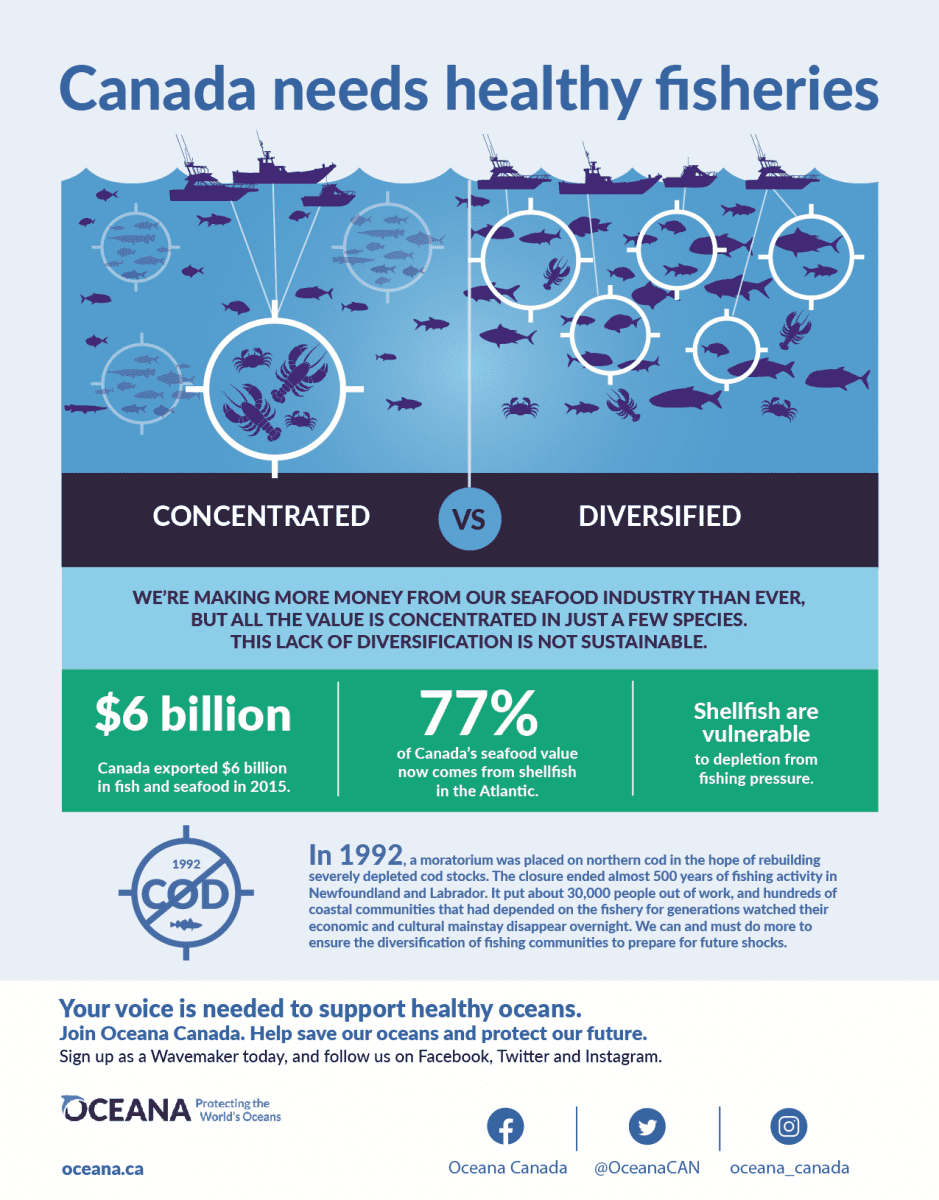November 24, 2016
Why Do We Need Healthy Fisheries?
Estimated reading time: 0 minutes
For millennia, Indigenous Peoples from coast to coast to coast have drawn sustenance from the sea. When Europeans set sail for Canada five hundred years ago, they were lured by waters heaving with cod. In the centuries that followed, fisheries continued to drive Canada’s economy and shape our culture and communities. In 2015, fish and seafood exports were worth $6 billion.
Behind those figures is a story of serial depletion. In the 1980s, Canada harvested cod to the point of collapse, putting thousands of Canadians out of work and bumping us from our position as the world’s leading seafood exporter. The fishing industry responded by shifting its focus to shellfish, which exploded in abundance — in part due to the collapse of groundfish stocks.
While today’s numbers look good on the surface — thanks to the high value that lobster and other shellfish command — they hide a troubling truth. Currently, our seafood industry is concentrated on just a few key species, including lobster, crab, shrimp and scallops. The total volume of Canadian seafood continues to decline while the overall landed value has gone up. This lack of diversity makes communities and economies vulnerable. A lobster fishery collapse, for example, would be significantly more socially and economically devastating than the cod collapse because the value of shellfish is so high and because of the lack of other options fishers can turn to.
Find out more about the state of Canada’s oceans and fisheries in our report, Here’s the Catch: How to Restore Abundance to Canada’s Oceans.

MOST RECENT
March 6, 2025
February 3, 2025
January 22, 2025
Celebrating New Beginnings in 2025: Four Right Whale Calves Spotted Off Florida Coast

